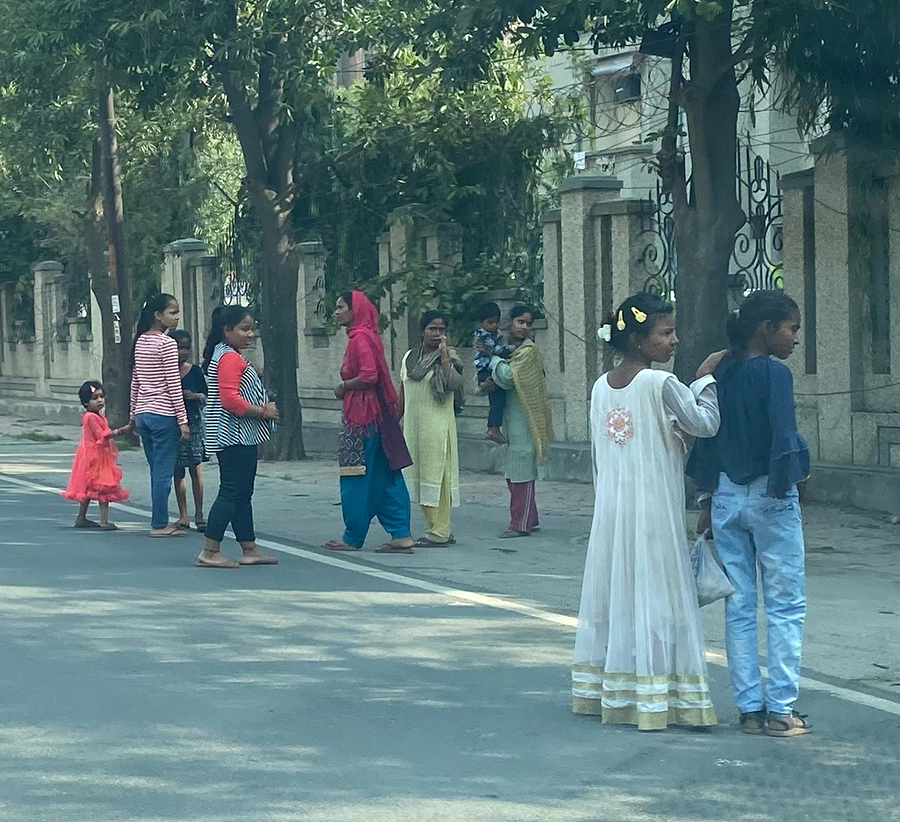Disclaimer: The following article is based on my personal views and observations. Kindly read the article, only if you are open to views.
Last month many of us celebrated the auspicious festival of Navratra. We prayed, fasted and then there were those of us (including myself) who did not fast but gorged on the delicious “ Vrat Ka Khana‘’. Then arrived the last two days of Navratra; the Ashthami and Ram Navmi. On these days devotees take part in what we all know as “ Kanjak or Kanya Poojan”. Nine Girls who have not yet attained puberty representing the nine forms of Durga are welcomed into our homes along with one boy ( langur). Their feet are washed, vermillion applied to their foreheads and Mauli or sacred thread tied around their wrists and they are treated to a delicious meal consisting of Chana, Halwa and Poori. They are also given gifts or money. All this has a religious significance. In my childhood or even yours you may remember that the neighbourhood girls and some of your small sisters were invited by the” neighbourhood aunties” for Kanya Poojan. At least this is how it used to happen in the past. Slowly instead of the neighbourhood girls people started inviting the girls of our maids and house helps for the pooja. This was good as the less privileged kids could feel special on that day.
But off late if you look around, this ages old tradition is being diluted. We all agree that with changing times, things should change but not to the extent that it loses its significance. On the days of Ashtami and Navmi gangs of boys and girls roam around the sectors to be invited into peoples’ homes. Many of these girls are about 15-16 years of age which, according to our ancient beliefs, is past the right age for kanjaks. They are often accompanied by a couple of women who chaperone these kids around. But if you observe closely these women are there for another purpose.
As soon as the children come out of houses after pooja they are interrogated by these women and any money or valuable gifts that the children get are to be surrendered to these women. The plate/bag of food or the occasional packet of biscuit or juice can be retained by the child. On one instance I asked a child what happens to the things that they get to which the small child sheepishly replied that “saare paise aunty rakh leti hain hume nahi deti”. I also asked her that what happens if you do not give the money to your aunty. She replied that “fir agli baar woh hume saath nahi laati”. One scene that I witnessed was scary enough to give me goosebumps. A lady accompanying a group of children was busy counting the money she collected while two very small girls that were with her ran across a busy road right into incoming traffic and were luckily saved by the vigilant motorist. It appears that these chaperoning aunties serve as aggregators for the innocent children just for the money, making it an industry and taking the devotional essence out of it. Also in many cases the children are seen throwing away plates filled with food into dustbins and on roadsides.
The Prasad that you so lovingly made and served to them ends up in the dust. It is totally not the children’s fault also for throwing the food. How much Halwa Poori can their little stomachs take? They visit numerous houses and it is humanly impossible to eat everything that they get at each house. What we as devotees can do is give them the food in a disposable box that they can carry it for later consumption. Let us understand the true meaning of our festival and not let our faith and devotion become an industry for some.
by Shobhit Jain (D-159; 9871333844)



Popular Stories
How To Revive Your Rainwater Harvesting System
The Water Couple’s Journey: From Cleaning Tanks to Complete Water Solutions!
Locals Felling Trees Near Sec A Pkt C
Winning Has Become a Habit for Divya
Is Green Park Heading Towards A Slum
Haphazard Parking, Narrow Walking Space In M Block Market
Recent Stories from Nearby
- Justice Delayed: The Uncertain Fate of CLAT 2025 Test Takers March 29, 2025
- Ladies Of The Sector Make The Perfect Eight March 29, 2025
- Blooming! March 29, 2025
- Time to Meet & Greet March 29, 2025
- Flute Recital March 29, 2025







